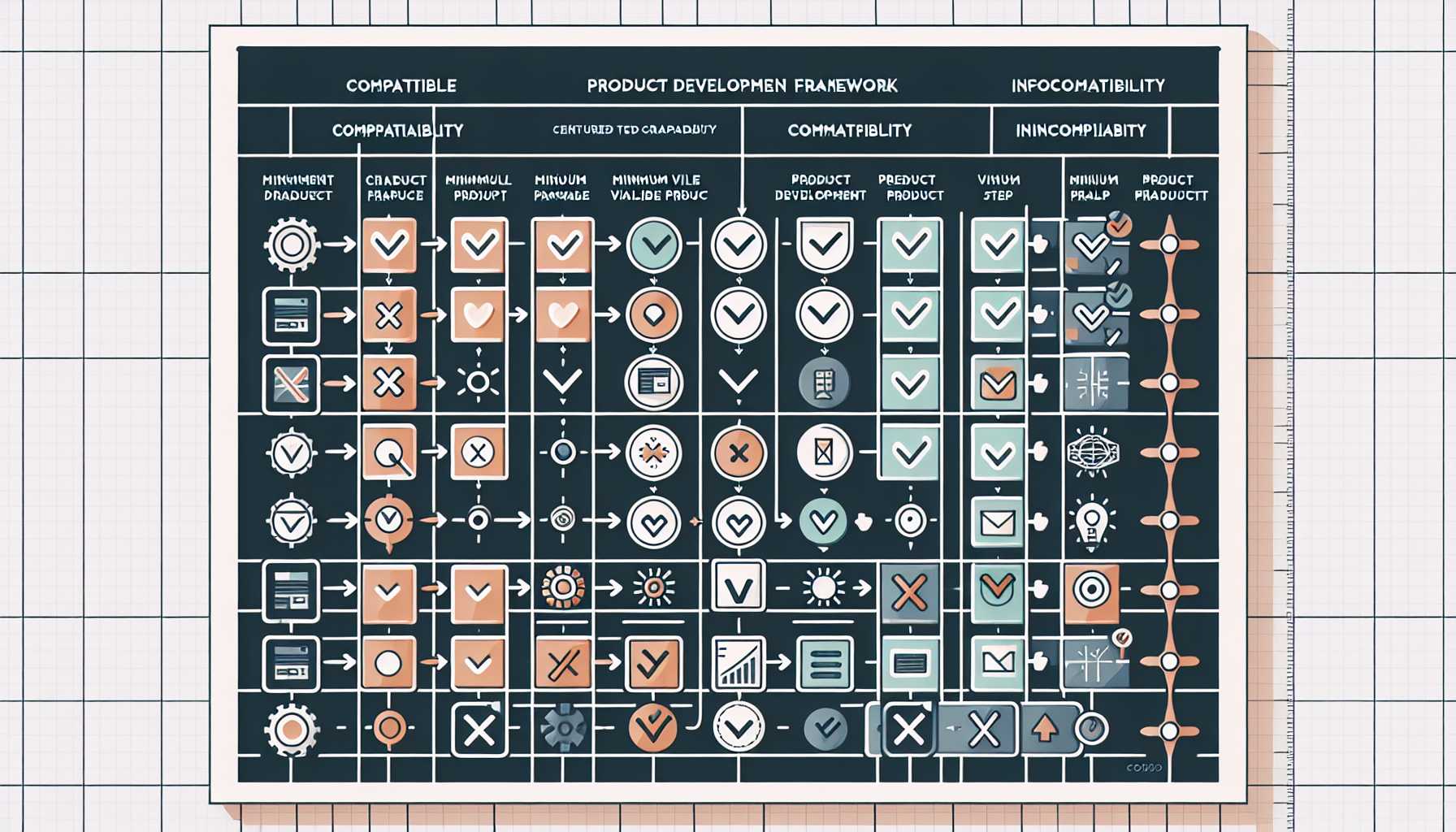Welcome back to our deep dive into the intricacies of product management, particularly in the technology sector. Today’s focus is on a critical aspect of product development: the Minimum Viable Product, or MVP. We’ll be comparing various product development frameworks to understand how they approach the concept of MVP.

Understanding the MVP
Before we delve into the comparative landscape, it’s worth revisiting the core idea of an MVP. Eric Ries, in his seminal book, “The Lean Startup,” describes an MVP as the version of a new product that allows a team to collect the maximum amount of validated learning about customers with the least effort. The emphasis is on learning and not on fully developing the product, which is a subtle yet significant distinction.
The Agile Approach to MVP
In my journey across various tech startups and giants, the Agile framework has prominently featured as a dynamic approach to MVP development. Agile, with its iterative process and incremental builds, places the MVP at the heart of its methodology. The primary goal is to develop a product that is good enough to satisfy early adopters and to provide a feedback loop to inform future development.
The Agile methodology allows for rapid adaptations to user feedback. However, in one early-stage startup where I led product strategy, we found the iterative nature also meant that the MVP could inadvertently become bloated. The temptation to add ‘just one more feature’ based on each round of feedback led us down a path of scope creep. Balancing the Agile ethos with strict prioritization was key.
The Lean Startup Method
Rooted in Agile principles, the Lean Startup approach takes MVP a step further by rigorously applying the Build-Measure-Learn feedback loop. In my experience, while this framework is excellent for fostering innovation and mitigating risks, it can also be challenging when a clear vision isn’t established. I recall one project where the lean MVP was too minimal, leading to poor initial user reception. Adequate user research and hypothesis testing beforehand could have bridged the gap between lean efficiency and user expectations.
The Scrum Framework
Scrum, a subset of Agile, has specific roles and ceremonies that are designed to refine the product backlog and focus on delivering a potentially shippable product increment. Scrum definitely encourages discipline and visibility in the MVP creation process.
One of the key challenges I’ve encountered with Scrum in MVP development is managing the expectations of stakeholders. Scrum’s reliance on sprints and continuous improvement can sometimes misalign with stakeholders’ expectations for a fully fleshed-out product at an MVP stage.
Waterfall Methodology
Although less popular in today’s fast-paced tech environment, the Waterfall methodology takes a linear approach to product development, including MVP creation. My experience with Waterfall was during a stint in a more traditional corporate setting where the sequence from conception to delivery was strictly followed.
This methodology can be double-edged – for instance, in one project, Waterfall ensured we were thorough with our initial specifications and planning for the MVP. However, the lack of iterative feedback until the end stages meant we were slow to respond to user needs that had evolved during development, leading to costly revisions post-launch.
The Kanban System
Kanban focuses on visualizing work and limiting work in progress. It’s an excellent way to manage workflow, but when it comes to MVP development, it is less prescriptive about what constitutes an MVP compared to Agile or Lean methodologies.
Drawing from my personal experience with Kanban, it notably simplifies managing project tasks and provides transparency. However, the absence of structured iterations made it difficult to define the scope of the MVP, as there was a tendency towards continuous development without a clear launch point.
Conclusion
After comparing different frameworks in my career, it’s clear that there is no one-size-fits-all approach to developing an MVP. Each framework has its strengths and weaknesses when it comes to MVP development, and the key is aligning the chosen methodology with the unique needs of the project and organization.
Agile and Lean methodologies, with their focus on continuous feedback and iteration, appear to be more naturally aligned with the concept of an MVP. However, the discipline and clear deliverables of Scrum and the task visualization of Kanban also have their merits. Even Waterfall, with its structured stages, can provide clarity, albeit with less flexibility.
The overriding factor for success is the product manager’s ability to align team efforts with business goals, maintaining a user-centric approach while mitigating risks, and knowing when to pivot based on market feedback.
I’d love to hear your thoughts and experiences with MVP development across various frameworks. Share your insights and let’s learn from each other’s journeys.
